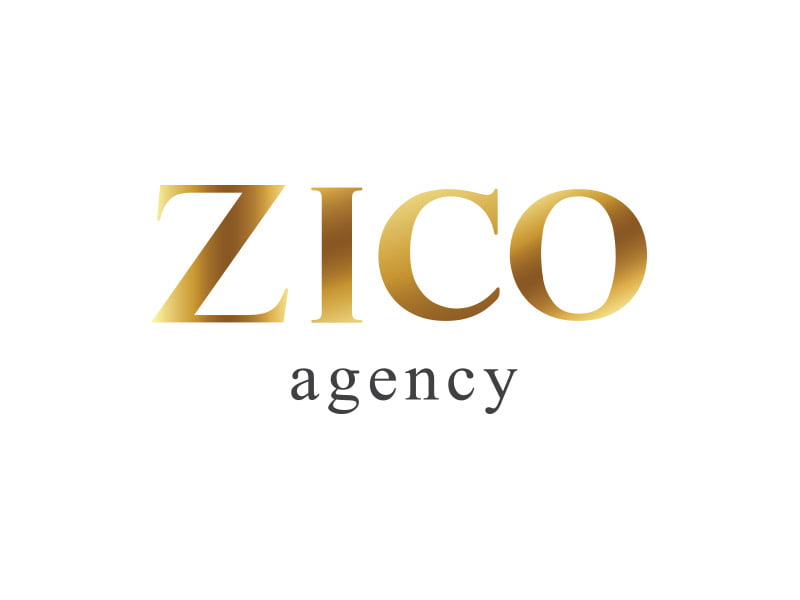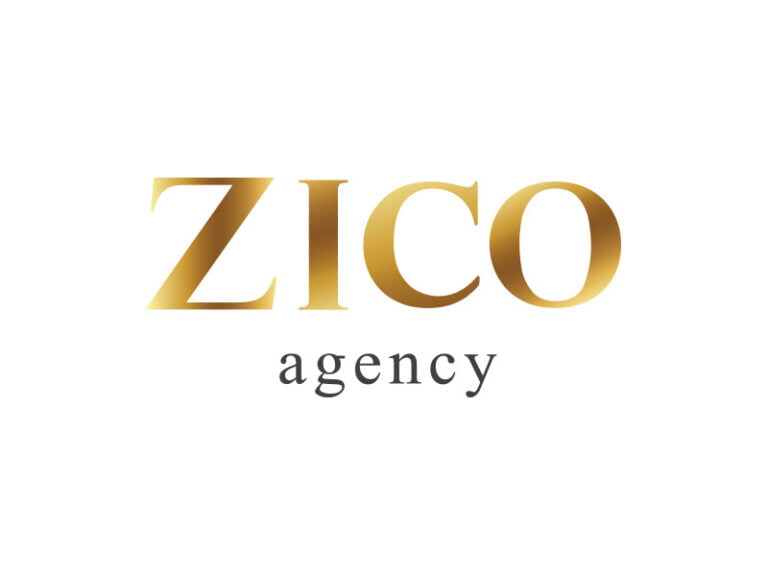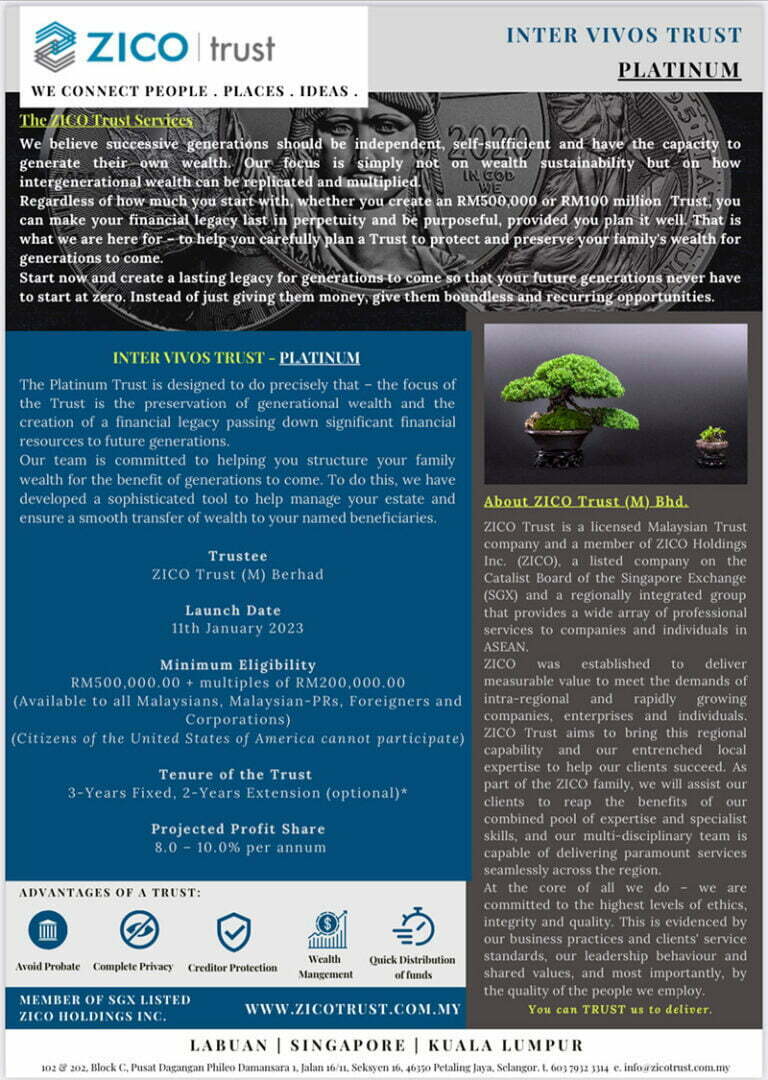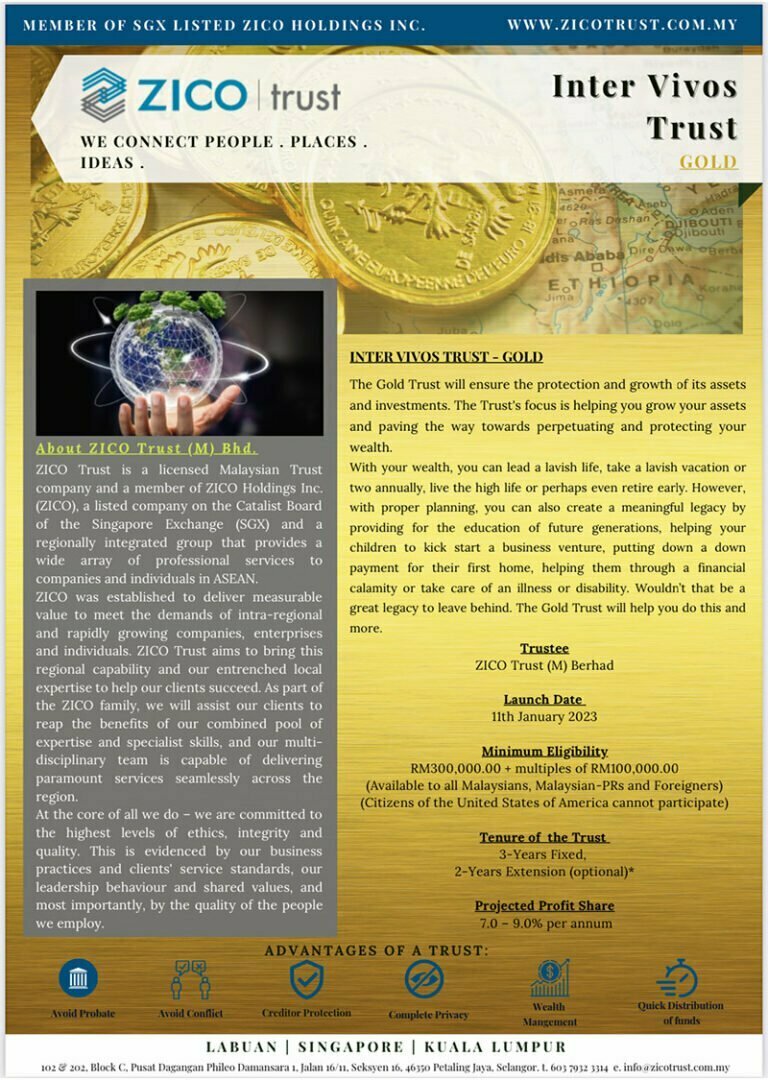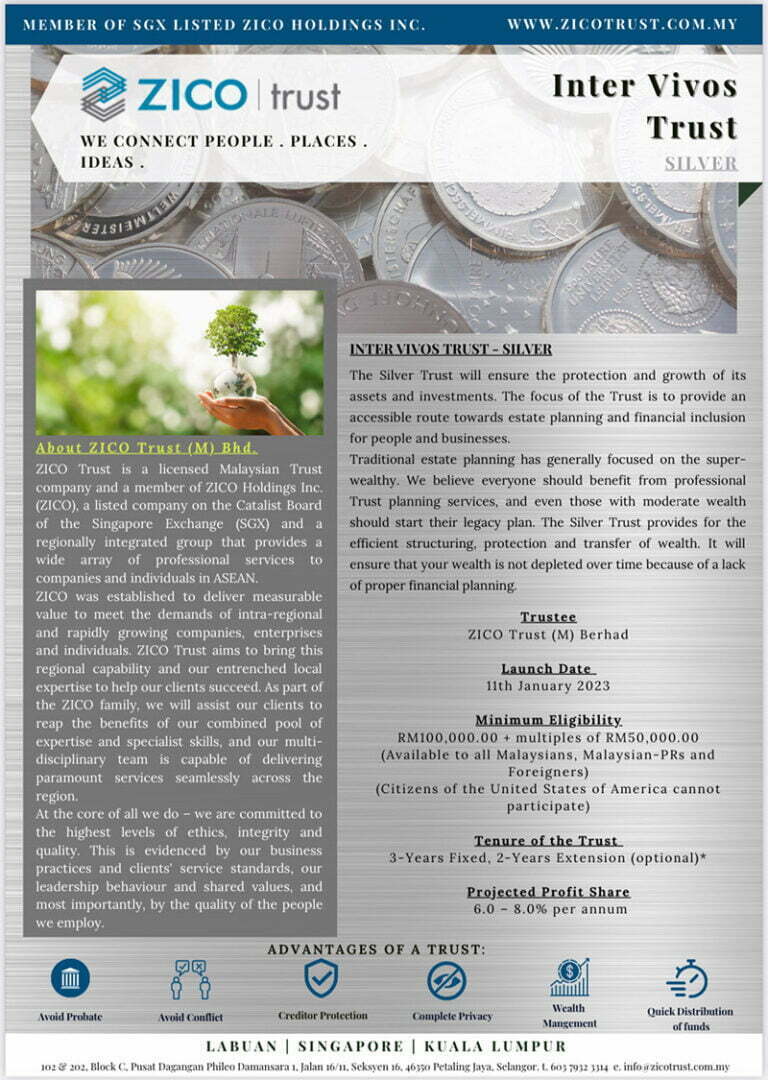A trust is set up to fulfil its settlor’s life objectives.
Upon formation, the trustee shall administer the assets placed within on behalf of its settlor. This structure shall enhance protection and privacy to these assets as their legal ownership is transferred to the trust.
In life circumstances, such as death, disability and a diagnosis of a major illness, the trustee is able to continue its administration of the assets. They shall not be frozen or inaccessible. The trustee can distribute and/or retain the assets which were placed within to the trust’s beneficiaries in accordance with its trust deed.
Such arrangements would benefit the trust’s beneficiaries, including the settlor, in the following manners:
1. Quick Cash Distribution
Supposedly, if an individual passes away prematurely, the trustee can distribute an amount of cash (as instructed in the trust deed) to his family members. Such a distribution can be made quickly as the cash is not frozen upon his death. This enables his loved ones to use the cash proceeds for:
- Bereavement-related costs.
- Legal fees to apply for the Grant of Probate (GP) from the High Court.
- Immediate living expenses, including the servicing of debt commitments.
Retain Wealth for Beneficiaries’ Interests
Alternatively, the settlor can instruct the trustee to retain either, all or a portion of the trust’s assets, for its beneficiaries in the trust period via a trust deed.
For instance, a parent intends to fund his child’s tertiary education in the future upon his enrollment at the age of 20. His child is 2 years old currently. Thus, the parent could set up a living trust, put his cash into it, and instruct his trustee via the trust deed to either withhold and/or invest the cash until he reaches 20 and enrols into a university. Upon which, the trustee shall release the money for the purpose of paying his child’s university fees.
3. Staged Distribution to Loved Ones
In a trust structure, the settlor could determine who, how much, when, and the purposes of distributing the trust’s assets. Such flexibilities enable the settlor to support his loved ones namely, his spouse, his children and his aged parents. As such, the settlor’s objectives of protecting the interests of his dependents could be fulfilled effectively.
For instance, if an individual wishes to support his family’s living expenses upon his death, he can set up a living trust, place cash into it, and instruct the trustee to begin distributing a fixed sum of cash on a monthly basis to his loved ones so that their living expenses are taken care of in the trust period, upon his death.
4. Financial Relief to the Settlor
Unlike a will, the trust’s settlor can nominate himself to be its beneficiary. Thus, in the event of a major life event, such as a stroke, a heart attack, dementia and permanent disability, the trustee could distribute out the trust’s assets in stages or in one-lump sum to offer financial support and relief to the settlor himself. In such an arrangement, the settlor can set up a financial safety net for himself.
Conclusion:
In brief, a trust is a versatile and flexible tool that allows its settlor to offer great asset protection and privacy to both the settlor and its beneficiaries. Therefore, it is common for a trust to be set up to offer both immediate financial relief and to prolong a financial legacy to meet the settlor’s life objectives in the future.

